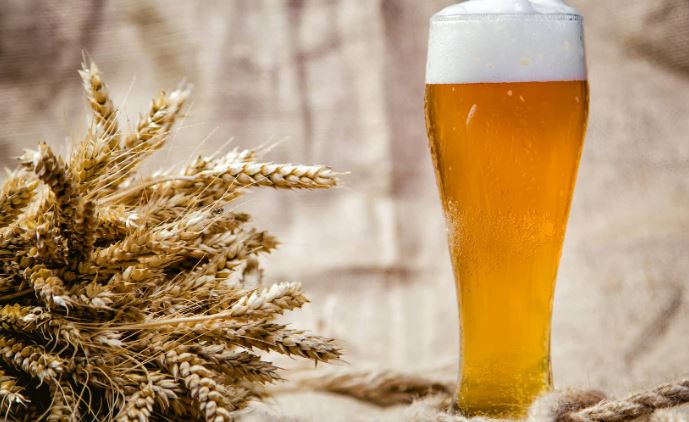Brewing your wheat beer at home is a gratifying adventure. Hence, offering a canvas to create a refreshing, light-bodied brew perfect for warm days or any occasion. In this guide, we’ll walk you through the simple and satisfying process of brewing wheat beers in the comfort of your home.

Choosing Your Wheat Malt
Start by selecting your wheat malt, a crucial ingredient that forms the backbone of your beer. Opt for malted wheat, which adds a smooth, slightly creamy texture to your brew. Combine it with malted barley to balance the sweetness and achieve a well-rounded flavour profile.
Gathering Your Ingredients
Assemble your ingredients: malted wheat, malted barley, hops for bitterness and aroma, yeast for fermentation, and water. The quality of your ingredients profoundly impacts the final taste, so opt for fresh and reputable sources.
Crafting Your Wheat Beer Recipe
Designing your wheat beer recipe is where creativity meets precision. Begin with a simple base, like a wheat ale, and consider adding a touch of citrusy hops for a zesty kick. Experiment with proportions to find the balance that suits your taste buds.
The Mash Process
Activate the enzymes in your malted grains by mashing them in hot water. The mash process extracts fermentable sugars, laying the foundation for your beer’s alcohol content. Maintain a consistent temperature throughout this step for optimal results.
Lautering and Sparging
Separate the liquid (wort) from the solid remnants of the mash in a process known as lautering.
Boiling and Adding Hops
Bring your wort to a rolling boil, the stage where hops come into play. Add hops at different intervals during the boil to impart bitterness, flavor, and aroma. The specific hops and their timing will influence the final character of your wheat beer.
Cooling and Fermentation
Swiftly cool your boiled wort to a temperature suitable for fermentation. Once cooled, transfer the wort to a fermenter and introduce your chosen yeast strain. The yeast will work its magic, converting sugars into alcohol and carbon dioxide.
Maturation and Clarification
Allow your beer to mature and clarify. This can take place in the same fermenter or, for enhanced clarity, transfer it to a secondary vessel. Patience is key during this phase, as your wheat beer develops its unique characteristics.
Carbonation and Bottling
After maturation, it’s time to carbonate your beer. If bottling, add a small amount of sugar to each bottle before sealing. This additional sugar kickstarts a secondary fermentation, naturally carbonating the beer.
Enjoying Your Wheat Beer
Once carbonation is complete, refrigerate your bottled wheat beer and, after a reasonable chilling period, savour the fruits of your labour. Pour into a glass, and relish the crisp, effervescent qualities of your homemade wheat beer.
Tips for Brewing Wheat Beers
Maintain Adequate Wheat Ratio
Aim for a wheat malt content of around 40-60%. This ratio ensures the wheat character shines through without overwhelming the beer.
Consider Specialty Wheat Malts
Experiment with variations like honey wheat malt or caramel wheat malt to add depth and complexity to your brew.
Embrace Citrusy Hops
Complement the natural fruity esters of wheat beers with hops known for their citrusy profiles. Varieties like Cascade or Amarillo can enhance the overall experience.
Fermentation Temperature Control
Maintain a consistent fermentation temperature within the yeast’s preferred range. This helps avoid off-flavours and promotes a clean fermentation process.
Experiment with Fruit Additions
Elevate your wheat beer by adding fruit during fermentation or bottling. Citrus fruits like orange or lemon zest can enhance the refreshing qualities of your brew.
Share and Gather Feedback
Enlist friends or fellow brewers to taste your wheat beer. Feedback from others can provide valuable insights and help you refine your brewing technique.
Conclusion
In conclusion, brewing wheat beers at home is a rewarding journey that opens a world of possibilities. Whether you’re a novice or an experienced homebrewer, the simplicity and versatility of wheat beer make it an ideal canvas for your creativity. So, gather your ingredients, fire up the kettle, and embark on the satisfying process of crafting your very own wheat beer. Cheers to the joy of homebrewing!
